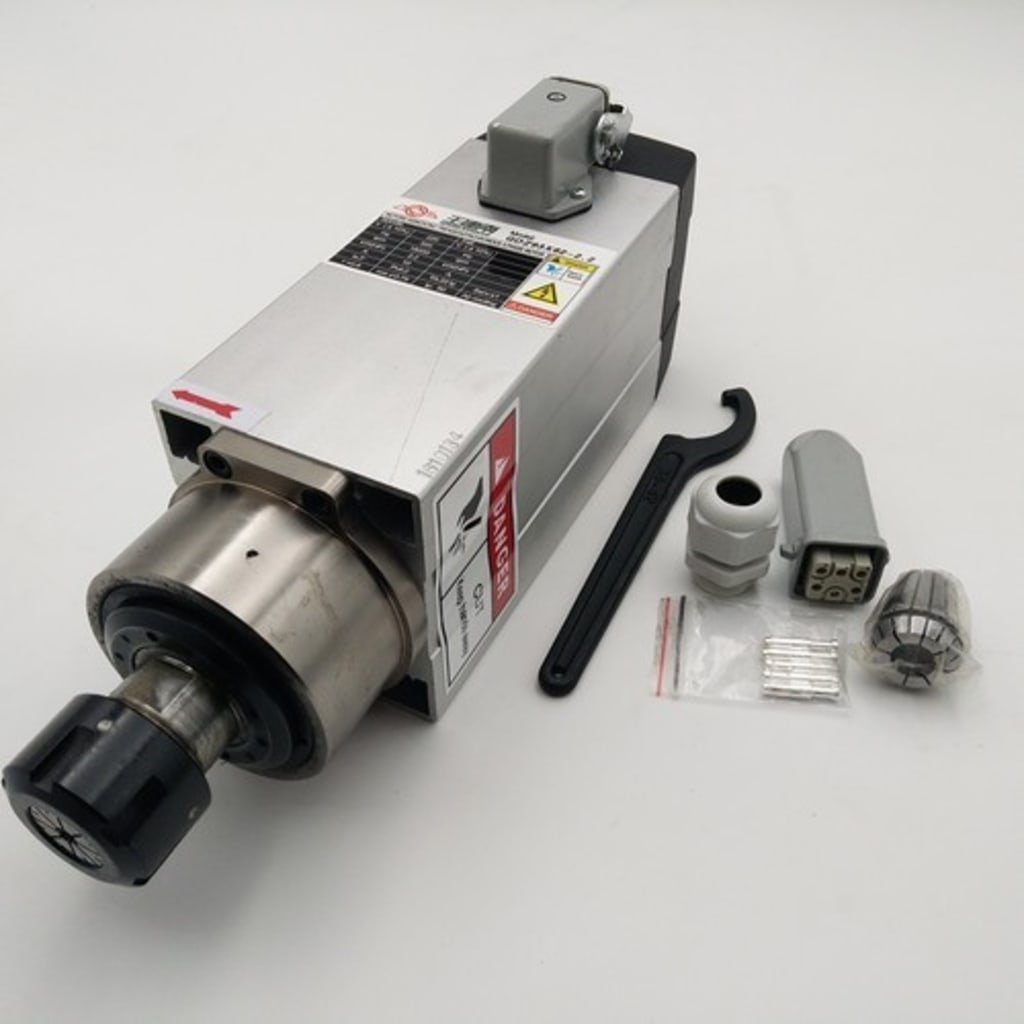How Do CNC Spindle Motor Function?
CNC Spindle Motor Function

CNC spindle motor are electric motors with a specific arrangement for PC numerical controlled equipment. This engine can achieve high speeds and power levels while at this point keeping a serious degree of accuracy. This presentation manages precision heading and a particularly arranged rotor.
The rotor is the piece of the motor that turns, and the precision course supports it at one or the other side. The stator is the proper piece of the motor that houses the windings. The windings make the alluring field that interfaces with the rotor to encourage force.
The joint effort between the stator and rotor allows the motor to show up at such high speeds while keeping a serious degree of precision. They pass electrical messages on to the windings to control how much power is made. The strength of these signs chooses the speed and power of the motor. A CNC Spindle engine can achieve high rates since they have a greater number of posts than various kinds of electric motors.
They conclude the number of posts by the number of winding matches used in the stator. The extra winding matches you see, the higher the speed you can achieve. For example, the average engine has four Spindles. CNC spindle Motor regularly has six or eight posts. This licenses them to achieve speeds of up to 20,000 cycles every second.
Sorts of CNC Spindle Motor
There are two primary sorts of CNC Spindle Motors: AC enlistment Motor and brushless DC Motor.
AC enrollment motors are the most broadly perceived sort of motor used in CNC applications due to their negligible cost and steady quality. Brushless DC motors are ending up being dynamically notable in generally excellent quality applications with chief speed and exactness.
AC enrollment motors use a subbing current to make an alluring field in the stator windings. This appealing field then teams up with the rotor to make force. The advantage of AC enrollment motors is that they are incredibly harsh and trustworthy, making them fit for present-day applications.
Brushless DC motors use the prompt current to deliver an appealing field in the stator windings. This appealing field then connects with the very sturdy magnets on the rotor to make force. The potential gain of brushless DC motors is that they have no brushes, which decreases crushing and adds immovable quality.
Advantages OF Using A CNC Spindle Engine
There are a couple of advantages to using a CNC Spindle motor over a regular electric motor.
Speed up: CNC Spindle Motor can show up at up to 60,000 RPM speeds, significantly higher than most regular electric motors. This acceleration can provoke extended effectiveness and work on surface finishing on machined parts.
Extended Power: CNC spindle motor similarly has extended force yield diverged from standard electric motors. This extended power grants heavier cuts to work without relinquishing speed or precision. It will similarly consider a greater extent of materials to be machined.
Lessened Vibration: CNC Spindle Motor moreover will frequently make less vibration than standard electric motors. This decrease in vibration is a result of the extended exactness of the heading and rotor plan. Less vibration infers dealt with surface fulfillment and extended accuracy.
Further created Unflinching quality: CNC Spindle Motor capability commendably for use in mentioning current applications. Hence, they ought to be intense and reliable. This better unfaltering quality can incite decreased leisure time and extended effectiveness. The last thing you want is your machine to be down an immediate consequence of a bombarded motor.





Comments
There are no comments for this story
Be the first to respond and start the conversation.